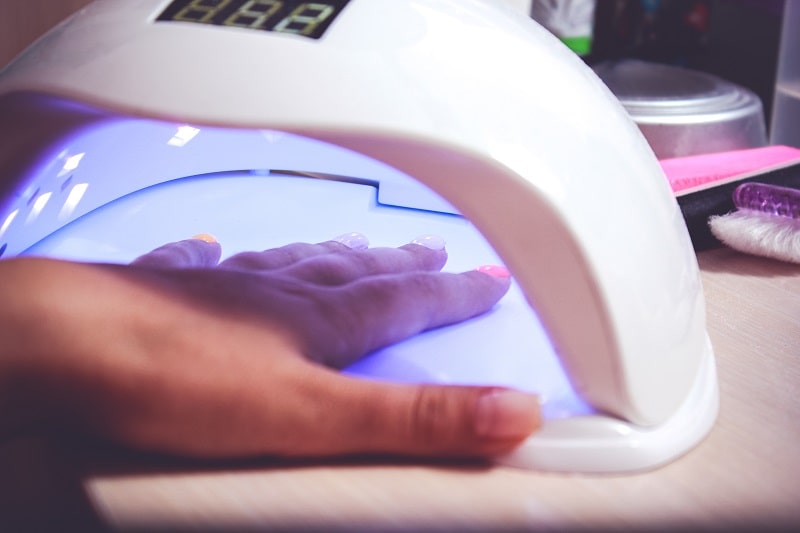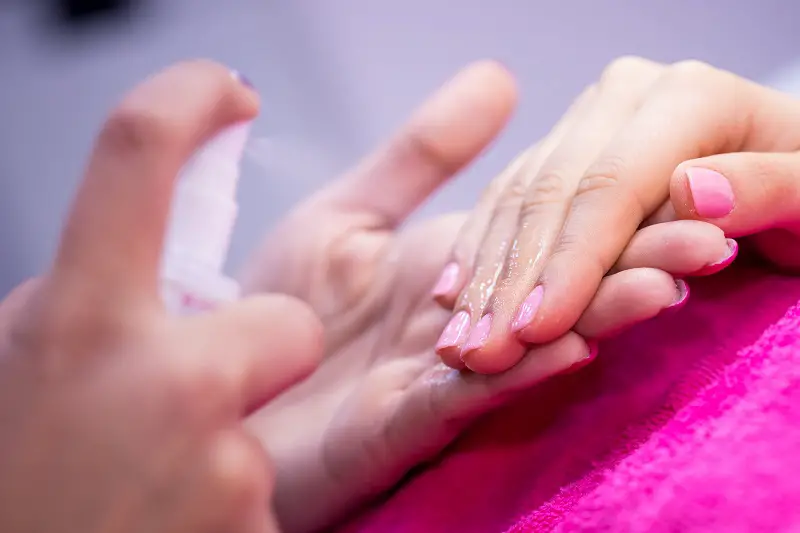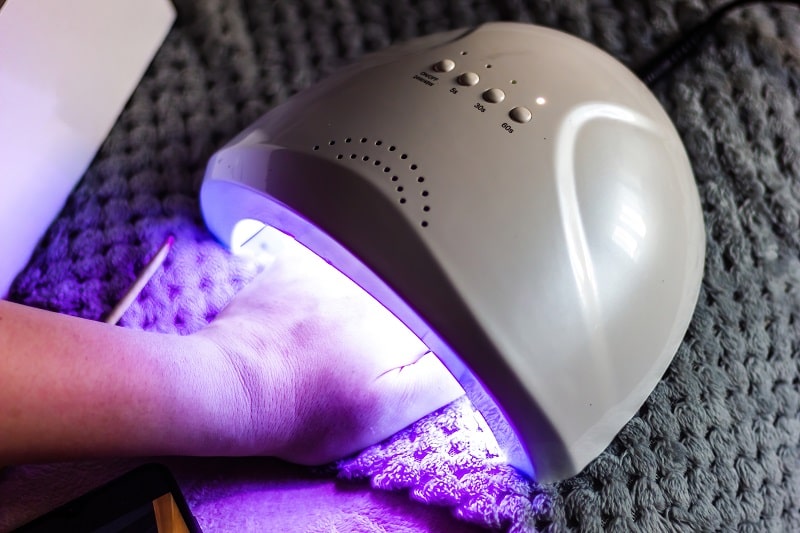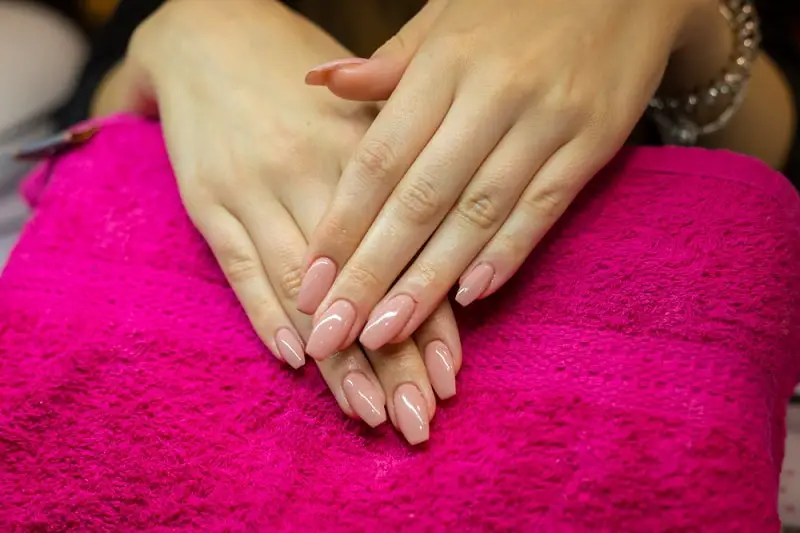With Polygel recently hitting the market, there’s likely to be many questions and confusion as to how to cure them accurately at home. Questions such as, “How many watts to cure Polygel?” are quite common.
The last thing you want after you’ve spent time and money to perfectly craft your set of pink and purple tips is to feel dejected when they break off days later. The most common reason for Polygel breakage is due to improper curing.
This is often caused by using the wrong lamp. There are many contradicting websites out there telling you whether or not you can cure Polygel nails with anything other than an LED light. I’m here to set the record straight.
What Is The Best Wattage To Cure Polygel Nails?
Polygel nails need a wavelength of 395-405 nanometers, therefore most professional nail salons utilize 36 watts. The most commonly recommended light to cure Polygel nails is a Gelish 18g / 36W LED Light. If Polygel isn’t cured thoroughly and between each layer, your nails could be prone to breakage or chipping.
Unlike regular nail polish, Polygel nails won’t dry just by simply being exposed to air. They need a light source in order to create that glossy, rock-hard feel we know and love. Polygel nails are carefully crafted to be cured the entire way through.
Do You Need UV Light For Polygel?
While you can use a UV light for Polygel nails, it’s recommended to use an LED light. A 36 watt LED light only takes around 30 seconds to cure all the way through, while a UV light would typically take around 2 minutes per hand.
If you’re curing your own nails at home, this may not seem like a particularly pressing issue—however for nail salons with a revolving door of customers, the faster the nail can cure, the better. This being said, not all polishes can be cured with a UV lamp.
Which is why some nail professionals swear off all UV lights in general. The last thing you want after you’ve applied and set your Polygel, and painted it over with vibrant hues, is to realize your polish isn’t compatible with a UV lamp after all.
Is A Higher Watt UV Lamp Better?
The higher the wattage, the faster the nail will cure. However, this doesn’t mean you should go out and buy the highest watt bulb you can find—slow and steady wins the race, and by winning the race I mean, drying your nail all the way through.
If your Polygel nail doesn’t cure all the way, the middle will remain soft, and you’ll find your nails breaking or chipping much faster. Also Polygel nails won’t air dry over time, they are specially formulated for use with LED nail lamps.
So keep in mind, if you want efficient drying without having to worry, invest in a high wattage LED lamp. Not only is a UV light not recommended for Polygel, but a higher watt UV lamp also carries the risk of over-curing your nails, resulting in a cracked, overly-hardened manicure.
Can You Cure Polygel With A Flashlight?
No, you cannot cure a Polygel nail set with a flashlight. While LED flashlights have many uses, using them to cure your Polygel nails is not one of them. Specialty LED lamps designed for nail curing are crafted in a particular way to enable light-emitting rays to penetrate the photoinitiators in gel polish.
Photoinitiators are molecules that trigger the curing process when exposed to UV or LED light. An LED flashlight is often coated in a phosphor (a fluorescent substance) that turns blue LED emitting light into other primary light colors as the wavelengths pass through, resulting in an overall white shade.
This phosphor coating acts as a block, unable to penetrate the photoinitiators required for curing. So, if you’re thinking about saving time and money by buying a flashlight instead, don’t. Flashlights are meant for the great outdoors and other late-night adventures, not for curing Polygel nails.
Will Any LED Light Cure Polygel?
While it all depends on the type of light you’re using, and the type of gel you’re applying, it’s unlikely you’ll be able to cure your Polygel nails with just any light. Gel polish is formulated to react with a specific wavelength of LED light.
Most lights don’t emit wavelengths this low, so, the chances of being able to successfully cure a set of Polygel nails with just any LED light found around your house are relatively slim. Think about it, any LED light you have around your home isn’t nearly as bright as a LED lamp used in the salon.
This is because the wattage and wavelengths need to be precise and they are much stronger than any lamp you’d use in your bedroom. Most LED lamps have some sort of UV component to them, this is what enables Polygel to fully and completely cure.
Are UV And LED Nail Lamps Safe?
It’s no secret that UV light is incredibly damaging not only to people but to materials as well. This is part of the reason many nail salons are making the switch over to LED lights. Exposure to UV rays can cause a host of problems but most notably, cancer.
In addition, damage to the skin on your hands is a common side effect of prolonged exposure to UV light. Since UV lamps take longer to cure Polygel nails than LED lights do, this increases the amount of time you’re spending exposed to harmful rays.
Final Thoughts: How Many Watts To Cure Polygel?
Polygel nails are truly the material of the future. Combining all the best parts of acrylic and gel, they are easy, strong, and durable if applied correctly. Polygel nails need to be cured with 36 watts, and require no less than 395 nanometers in order to penetrate all the way through.
If somehow your Polygel nail does not cure all the way through, it’s likely to leave a soft spot in the middle, susceptible to breakage and damage to your nail bed. UV lamps are not recommended for Polygel nails due to their slow cure time, risk of not curing properly, and harmful radiation emitted.
LED lamps are the way to go, with safe, non-cancerous rays strong enough to penetrate all the way into the middle of the nail for a long-lasting, glamorous manicure. If you have an older UV lamp that is not LED, I recommend replacing it with an LED lamp.






